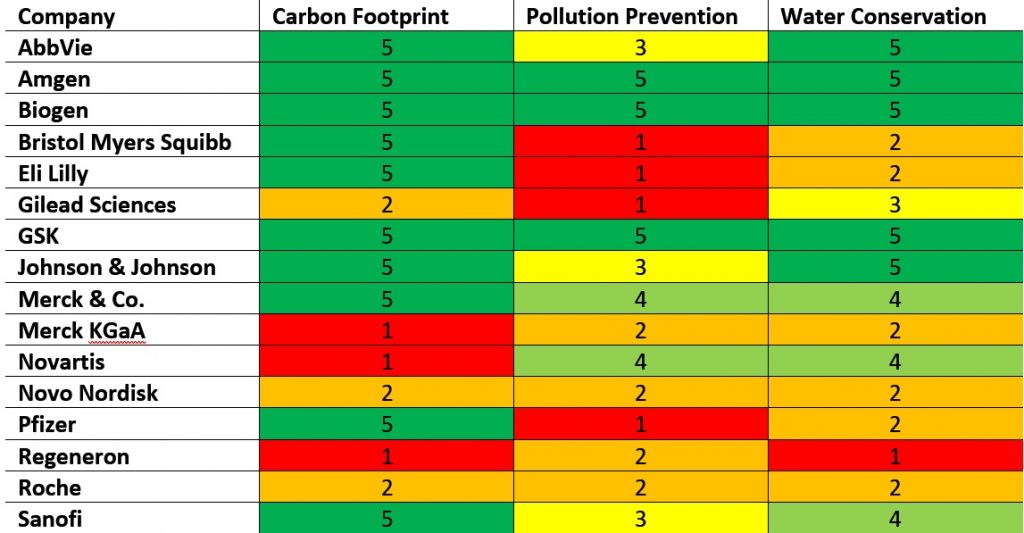As global leaders assemble at the COP26 meeting in Glasgow, we take a look at how Big Pharma is addressing environmental governance and how the top firms perform against their peers.
Another quarter down, and another bout of pharma firms describe their financial successes and woes. But a number of companies have described their efforts to look after the environment, perhaps spurred on by COP26, the UN Climate Change Conference taking place in Glasgow, UK this week.
UK pharma giant GlaxoSmithKline spoke last week about its renewable energy investments in carbon reduction initiatives at manufacturing sites in the UK and US.

Image: Stock Photo Secrets
The firm, which is one of the sponsors at COP26, announced a £50 million ($68 million) investment back in September aimed at reducing greenhouse gas emissions by installing wind turbines and solar panels at plants in Irvine, Scotland and Oak Hill, New York, which the company says accounts for almost half of its total carbon emissions.
“We also announced the new R&D program to reduce greenhouse gas emissions from metered dose inhalers which are responsible for 45% of the Company’s carbon emissions,” the firm said on its Q3 call. “These new initiatives support the continued progress on our environmental commitments to be net zero and nature positive by 2030, which we’ll share more on COP26.”
Sanofi, meanwhile, announced a target to reach carbon neutrality by 2030 – a 20-year acceleration on its previous target – on its Q3 call.
“We’re building on great work done across organization that has allowed us to already reduce submissions of our activities by 27% since 2015,” CEO Paul Hudson told investors.
“We have set the clear ambition of a 100% renewable electricity across our operations by 2030. We’re moving full speed ahead and delighted to highlight that all our sites in France are now entirely powered by renewable activity. We’re taking decisive actions to reduce the environmental footprint of our products and as an industry-leading global manufacturer of hundreds of millions of vaccines every year, we have made recyclable, eco-friendly product packaging a priority with the aim to reduce list of free vaccines by 2027.”
He added one of its milestones has already been achieved, with approximately 25% of all its flu vaccines now packaged in sustainable materials.
“The Pharma Industry itself is heavily regulated and it would be easy to hide behind complex supply chains, interactions with the regulators, and regulatory agencies, etc. But the reality is that climate change is already here so the time for sustainable action is simply now.”
Another life sciences firms presenting at COP26, Novartis, meanwhile, highlighted its Environmental, Social and Governance (ESG) targets in September. The firm says it is making steady progress versus its 2025 target to achieve carbon neutrality in its own operations – with a 28% reduction in carbon emissions to date from a 2016 baseline – and has committed to net zero carbon by 2040.
Rankings
You would be hard pushed to find a pharma firm that did not have goals to achieve lower carbon footprints and a focus on sustainability as all multinationals wake up to their role in protecting the environment.
But how much of all this is just words, and how ‘green’ are these firms? Tech firm Censible aggregates millions of data points to measure how public companies perform on environmental (and other) issues.
Below are the environmental indices attributed by Censible for some of the top pharma firms measured against their peers, 1 being the worst, 5 being the best:

Carbon footprint: A company’s performance in this category is based on its success in implementing energy efficiency measures. Investments in energy efficient technology, green building and sourcing of renewable energy can all lead to cost savings and reduce the company’s contribution to climate change.
Pollution Prevention: Companies are evaluated on pollution prevention by the levels of waste (including hazardous waste) they produce and release into the environment, and can be affected by whether they develop products that can reduce exposure to pollution.
Water Conservation: A company’s score in this category depends on its measures to minimize water usage and impacts on stressed or drought-prone water resources.
Disclaimer (from Censible): Ratings are based on a calculation of relevant data. Ratings do not reflect any qualitative review of company performance related to any of the specific categories, pillars or values. The quality and quantity of data varies and may not be an accurate reflection of actual performance related to any of the mindful investing indicators.
